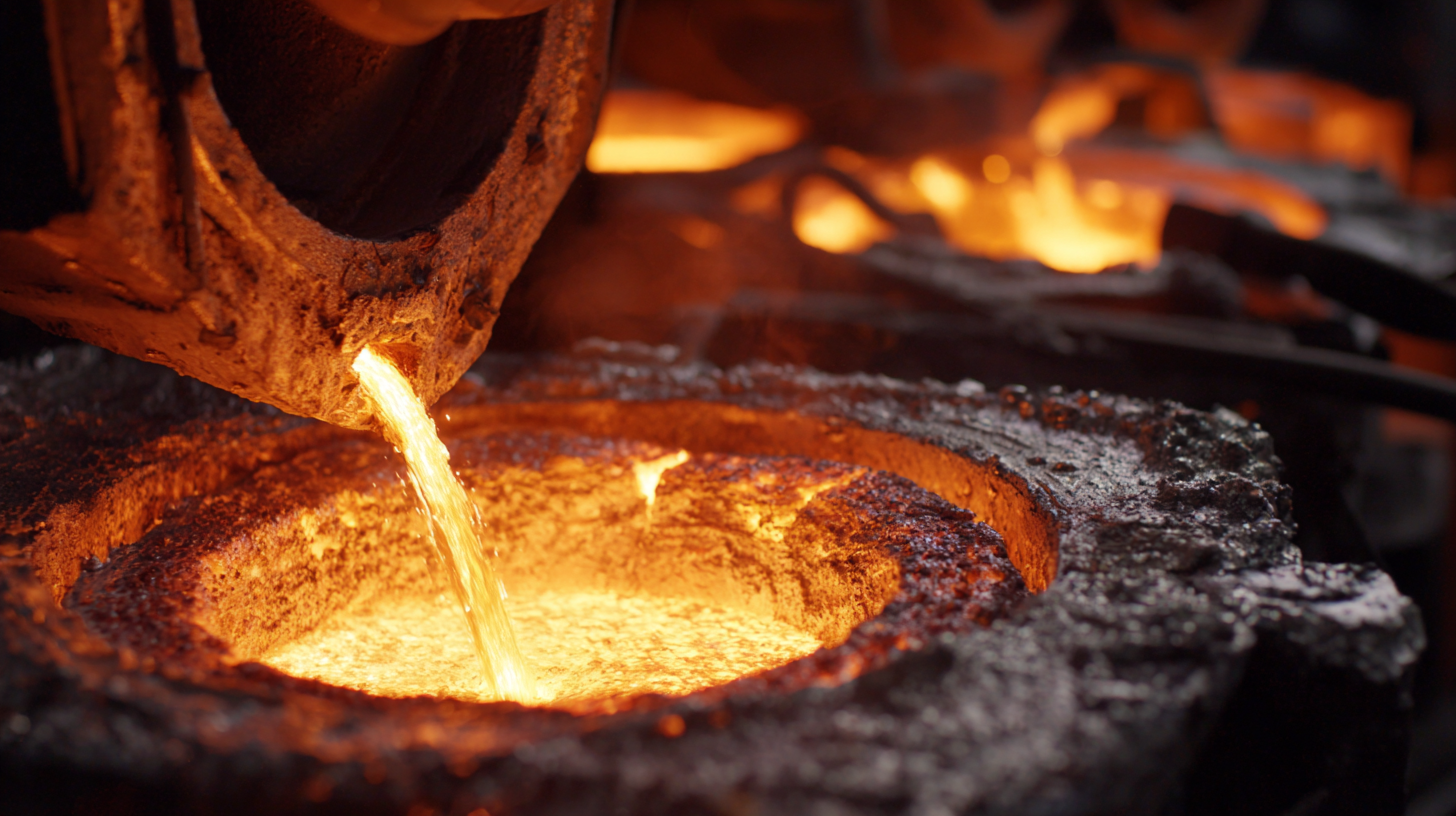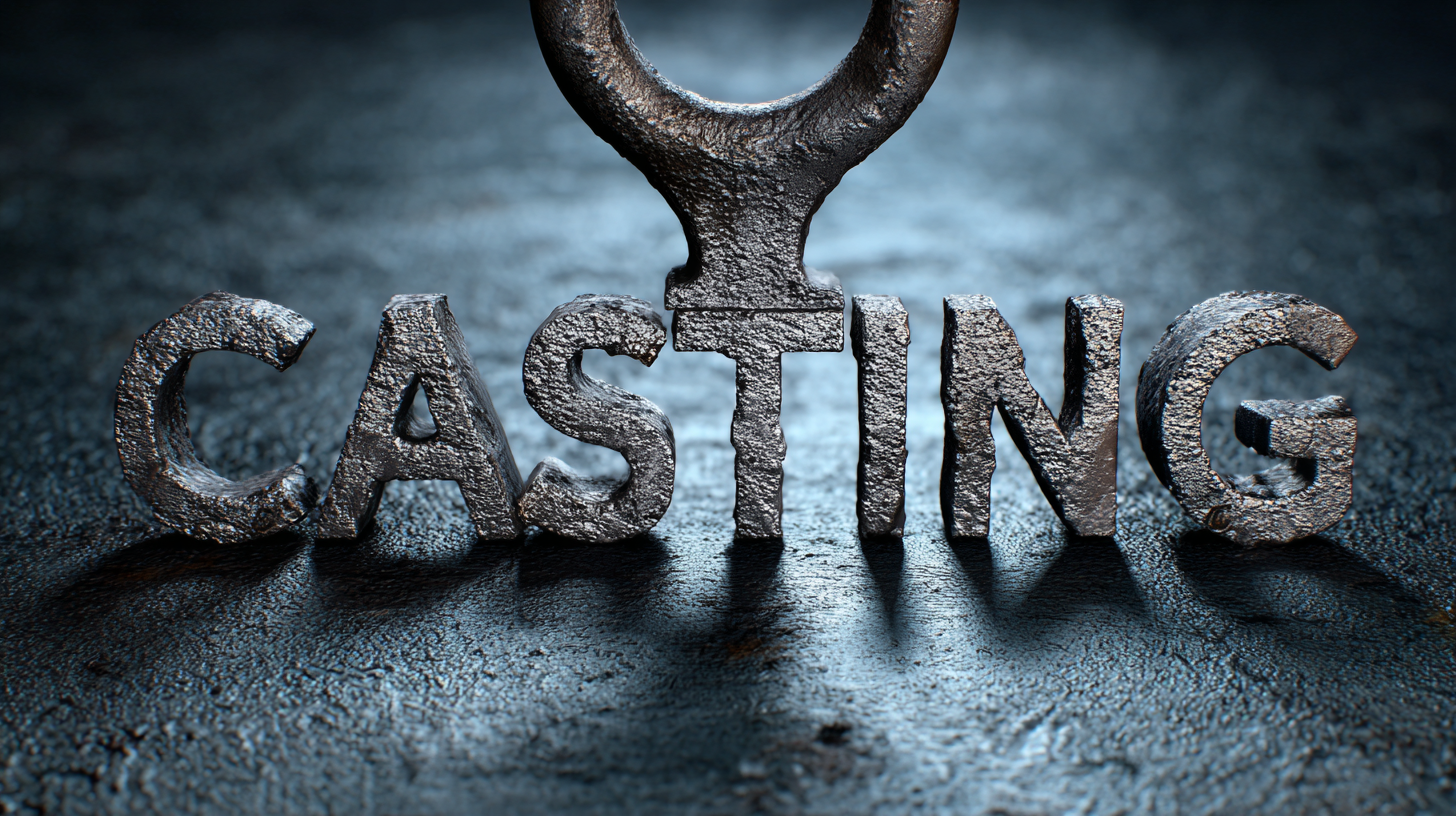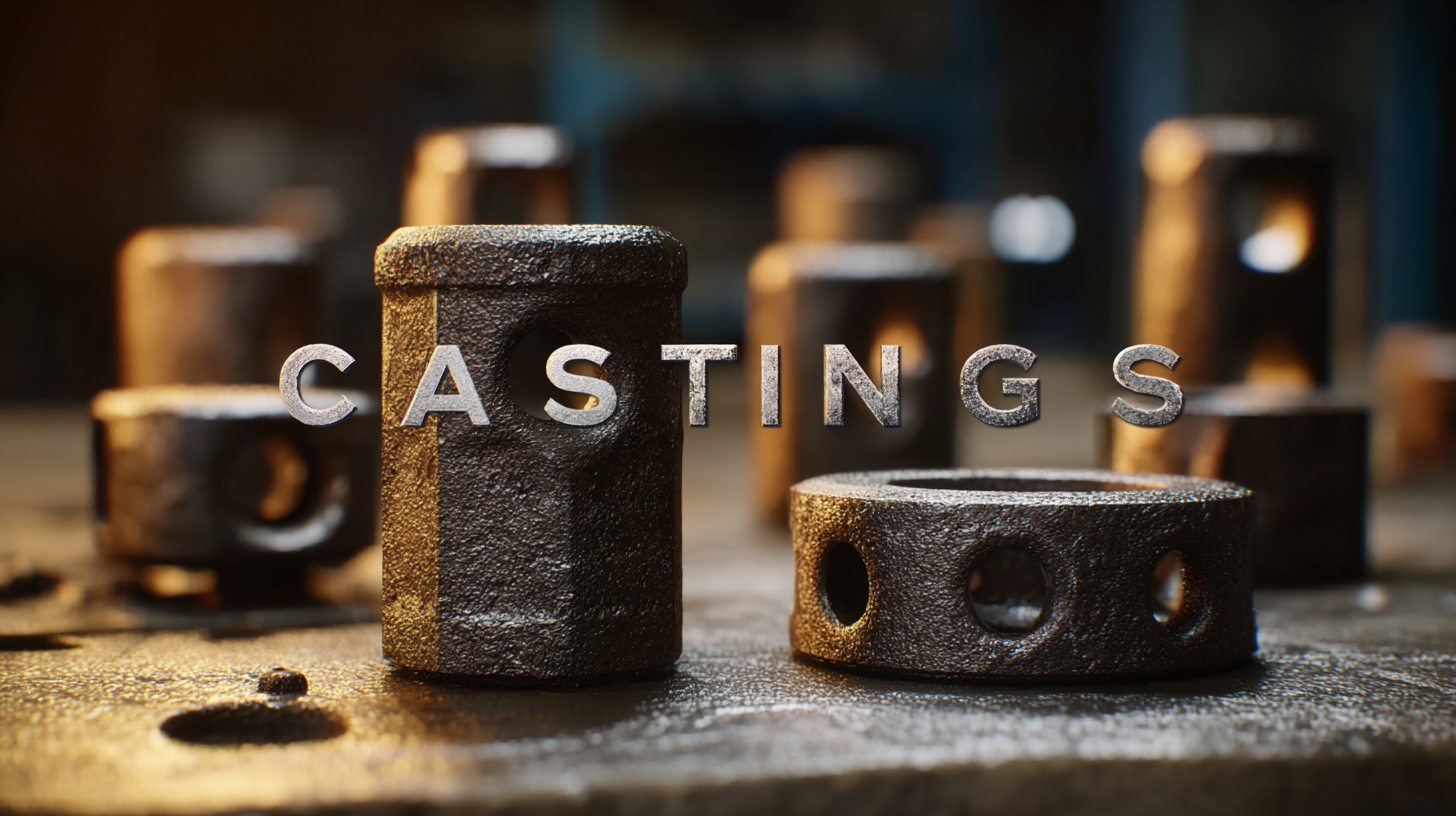Choosing the right casting process is crucial for manufacturers seeking to optimize production efficiency, reduce costs, and maintain high-quality standards in their products. As the landscape of manufacturing evolves, understanding the various alternatives available for casting processes becomes increasingly important. Each method offers distinct advantages, whether it’s sand casting for complex shapes or die casting for high-volume runs. Manufacturers must consider factors such as material compatibility, production scale, lead time, and required tolerances when selecting a casting process.

This blog will delve into the various types of casting processes available, providing insights into their unique characteristics and applications, ultimately guiding businesses in making informed decisions to meet their specific manufacturing needs.
Selecting the correct casting process for your manufacturing needs begins with a thorough understanding of your product requirements and material specifications. According to a report by Freedonia Group, the global metal casting market is anticipated to reach $175 billion by 2024, driven by the increasing demand for customized metal components. This statistic highlights the importance of aligning your casting choices with both market trends and specific product demands.
When identifying product requirements, consider factors such as dimensional accuracy, surface finish, and mechanical properties. For instance, precision casting methods, like investment casting, can achieve tolerances as tight as ±0.5%, making it ideal for intricate designs found in aerospace and medical applications. Meanwhile, material specifications will also play a pivotal role; the American Foundry Society notes that aluminum and iron account for over 70% of the casting market, emphasizing the need to match your desired material with the appropriate process to maximize efficiency and cost-effectiveness. Understanding these elements will ultimately lead to a more informed decision when choosing a casting method that meets both your operational needs and industry standards.
When evaluating different casting processes available in the market, it is essential to understand the specific needs of your manufacturing project. Casting methods vary widely, from traditional sand casting to advanced techniques like investment casting and die casting. Each technique has unique advantages and limitations that can impact product quality, production speed, and cost efficiency. For example, sand casting is highly versatile and ideal for creating complex shapes, while die casting offers precision and is better suited for mass production of smaller components.

Additionally, newer approaches such as 3D printing are transforming traditional casting methods by enabling rapid prototyping and reducing lead times. Research has shown that there is ongoing exploration of alternative manufacturing methods, including the comprehensive evaluation of various casting solutions, which can yield better performance outcomes. As the industry evolves, understanding these processes becomes crucial for making informed decisions that align with specific project requirements, such as material properties, production volume, and the desired finish of the final product.
When selecting a casting process for manufacturing, budget constraints and cost implications play a pivotal role in the decision-making process. Industry reports indicate that approximately 40-60% of a manufacturing budget can be allocated to casting costs, which include materials, labor, and overhead. For example, a recent report from the Metal Casting Association suggests that the cost per unit can vary significantly among different casting methods, ranging from as low as $5 per piece for sand casting to upwards of $50 or more for precision casting techniques.
Understanding these financial implications is essential for manufacturers aiming to optimize their processes without compromising quality. Moreover, the initial setup costs for various casting methods can also differ widely. Permanent mold or die casting processes, while offering high durability and refined finishes, require substantial upfront investment in tooling, which could deter operations with tight budgets. According to a survey by the American Foundry Society, nearly 70% of small to medium-sized manufacturers identify cost as a major barrier to adopting advanced casting methods, emphasizing the importance of aligning the chosen casting process with financial capabilities.
| Casting Process | Material Type | Unit Cost ($) | Lead Time (Days) | Production Volume | Notes |
|---|---|---|---|---|---|
| Sand Casting | Aluminum | 5.00 | 14 | Low to Medium | Versatile for complex shapes |
| Investment Casting | Stainless Steel | 15.00 | 21 | Medium to High | High precision and finish |
| Die Casting | Zinc | 10.00 | 7 | High | Ideal for high-volume production |
| Permanent Mold Casting | Magnesium | 8.50 | 10 | Medium | Good surface finish and dimensional accuracy |
When selecting the best casting process for your manufacturing needs, it's essential to consider both lead time and production volume. Lead time refers to the duration from the start of production to the final delivery of the product, while production volume indicates how many units you need. Understanding these factors will significantly impact your choice of casting methods, from sand casting to die casting or investment casting.
Tips: If you require quick turnaround times for a small batch, sand casting might be a suitable option due to its shorter setup time. Conversely, for larger production volumes, die casting can be a more efficient choice, allowing for faster production rates and greater precision in finished products. Always evaluate your deadlines and order sizes to determine which casting process aligns best with your operational goals.
Consider also that some casting methods offer greater flexibility in design changes, which may be crucial depending on your project's nature. If you're anticipating future modifications, look for processes like investment casting that can accommodate design iterations more easily. Ultimately, aligning your production needs with the appropriate casting process will help ensure a successful manufacturing outcome.
When choosing the best casting process for your manufacturing needs, it’s crucial to examine the quality standards and tolerance levels required for your specific application. Tolerance levels dictate the acceptable limits of variation in the dimensions and characteristics of a product, which are pivotal in ensuring a reliable and effective end product. For instance, a study highlighted that inadequate tolerance screening in automotive safety components can lead to serious adverse outcomes, underscoring the importance of rigorous screening processes.
 In the casting industry, different materials and processes offer varying tolerance capabilities. For instance, investment casting typically provides tighter tolerances compared to sand casting, often achieving tolerances as close as ±0.005 inches. When selecting a casting method, manufacturers must consider not only the tolerances but also how they align with industry standards. Establishing a clear understanding of these requirements helps avoid costly mistakes and ensures product reliability.
In the casting industry, different materials and processes offer varying tolerance capabilities. For instance, investment casting typically provides tighter tolerances compared to sand casting, often achieving tolerances as close as ±0.005 inches. When selecting a casting method, manufacturers must consider not only the tolerances but also how they align with industry standards. Establishing a clear understanding of these requirements helps avoid costly mistakes and ensures product reliability.
Tips:
1. Always consult with experts to identify the most suitable casting method based on the required tolerances and material properties.
2. Implement quality control measures throughout the manufacturing process to monitor compliance with established tolerance levels.
3. Stay informed about industry standards and advancements in casting technologies to refine your manufacturing processes continually.




